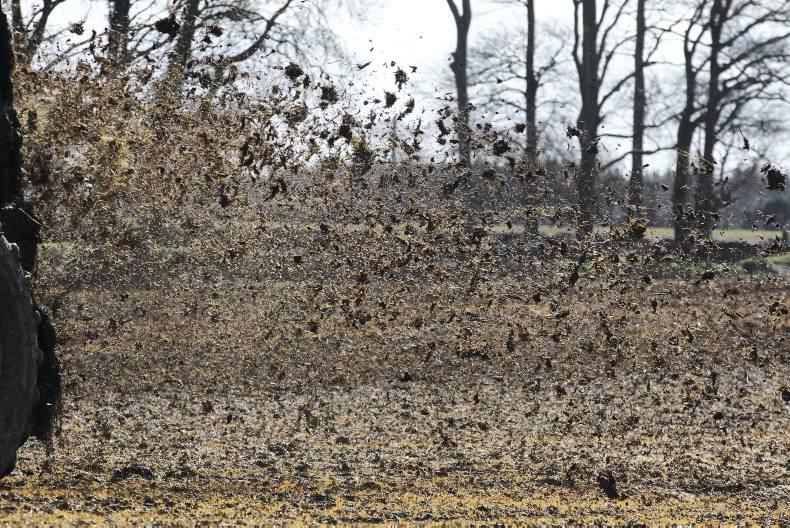The report found that the practice of using antibiotics to improve livestock health and growth may have “unintended environmental impacts” caused by interactions among the wide range of micro and macroorganisms found in agroecosystems.
“We provide the first demonstration that antibiotics can increase dung emissions of methane, a potent greenhouse gas, by 1.8-fold,” the authors of the report say.
The main finding of the report is that antibiotics used in livestock restructure dung beetle gut flora (due to interaction with cow pats) and raise greenhouse gas emissions from dung, thereby indicating that antibiotic treatment “may have unintended, cascading ecological effects that extend beyond the target animal”.
It hypothesised that a possible reason for this is that antibiotics alter the interaction between methane-causing organisms and bacteria in cattle and dung environments, leading to increased methane production.
The report also said that while dung emissions of methane are "typically lower than those released from belching", they still comprise "a substantial proportion of total agricultural methanogenesis in pasture systems".
The authors said their findings call for larger-scale analyses that take other factors into account, such as the relative importance of dung versus belching in gas emissions, and the global extent and purpose of antibiotic use in livestock production.
“Improved monitoring and estimates of agricultural antibiotic use will be necessary to identify whether antibiotics may impact the overall contribution of livestock production to global warming.”
AMR
Antibiotics are used extensively in agriculture to promote growth and to treat or prevent livestock disease. In 2014, 90t of veterinary antibiotics were sold in Ireland, according to a report from the Health Products Regulatory Authority. However, the use of antibiotics in agriculture can lead to antibiotic resistance among pathogens and the spread of antibiotic resistance genes to surrounding environments. This is known as antimicrobial resistance (AMR).
Higher use of antibiotics drives increased drug resistance as bacteria are exposed more often to the antibiotics used to treat them
In December 2015, a report commissioned by the British government warned against the overuse of antibiotics in farming, saying that just as there is a clear correlation between rising levels of human use of antibiotics and growing resistance, the same is essentially true in agriculture.
“Higher use of antibiotics drives increased drug resistance as bacteria are exposed more often to the antibiotics used to treat them. This is also true for other antimicrobial medicines, such as antifungals,” the report said.
Moreover, in March this year the European Parliament agreed that the use of existing antibiotics should be restricted and new ones developed in order to fight the growing threat of AMR.
In a vote on draft plans to update an EU law on veterinary medicines, MEPs agreed to support a ban on collective and preventive antibiotic treatment of animals. They have also backed measures to stimulate research into new medicines.
Read more
EU Climate Change Commissioner: ‘Agriculture has an important role to play in reaching climate targets’
The report found that the practice of using antibiotics to improve livestock health and growth may have “unintended environmental impacts” caused by interactions among the wide range of micro and macroorganisms found in agroecosystems.
“We provide the first demonstration that antibiotics can increase dung emissions of methane, a potent greenhouse gas, by 1.8-fold,” the authors of the report say.
The main finding of the report is that antibiotics used in livestock restructure dung beetle gut flora (due to interaction with cow pats) and raise greenhouse gas emissions from dung, thereby indicating that antibiotic treatment “may have unintended, cascading ecological effects that extend beyond the target animal”.
It hypothesised that a possible reason for this is that antibiotics alter the interaction between methane-causing organisms and bacteria in cattle and dung environments, leading to increased methane production.
The report also said that while dung emissions of methane are "typically lower than those released from belching", they still comprise "a substantial proportion of total agricultural methanogenesis in pasture systems".
The authors said their findings call for larger-scale analyses that take other factors into account, such as the relative importance of dung versus belching in gas emissions, and the global extent and purpose of antibiotic use in livestock production.
“Improved monitoring and estimates of agricultural antibiotic use will be necessary to identify whether antibiotics may impact the overall contribution of livestock production to global warming.”
AMR
Antibiotics are used extensively in agriculture to promote growth and to treat or prevent livestock disease. In 2014, 90t of veterinary antibiotics were sold in Ireland, according to a report from the Health Products Regulatory Authority. However, the use of antibiotics in agriculture can lead to antibiotic resistance among pathogens and the spread of antibiotic resistance genes to surrounding environments. This is known as antimicrobial resistance (AMR).
Higher use of antibiotics drives increased drug resistance as bacteria are exposed more often to the antibiotics used to treat them
In December 2015, a report commissioned by the British government warned against the overuse of antibiotics in farming, saying that just as there is a clear correlation between rising levels of human use of antibiotics and growing resistance, the same is essentially true in agriculture.
“Higher use of antibiotics drives increased drug resistance as bacteria are exposed more often to the antibiotics used to treat them. This is also true for other antimicrobial medicines, such as antifungals,” the report said.
Moreover, in March this year the European Parliament agreed that the use of existing antibiotics should be restricted and new ones developed in order to fight the growing threat of AMR.
In a vote on draft plans to update an EU law on veterinary medicines, MEPs agreed to support a ban on collective and preventive antibiotic treatment of animals. They have also backed measures to stimulate research into new medicines.
Read more
EU Climate Change Commissioner: ‘Agriculture has an important role to play in reaching climate targets’









SHARING OPTIONS